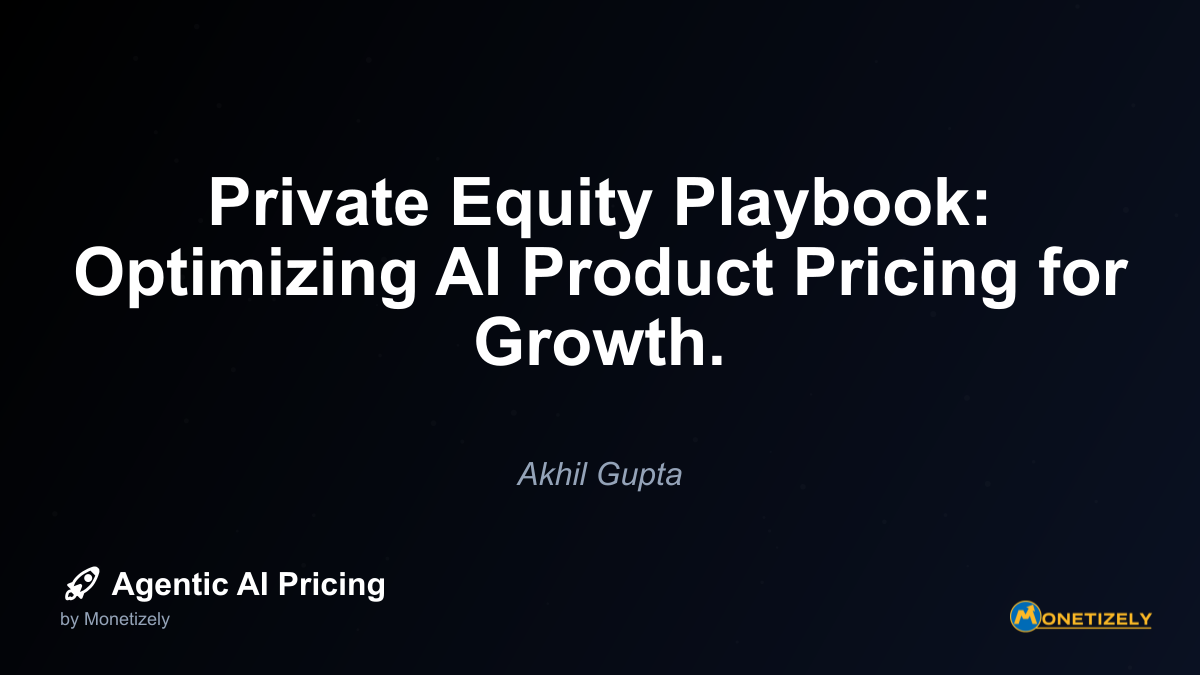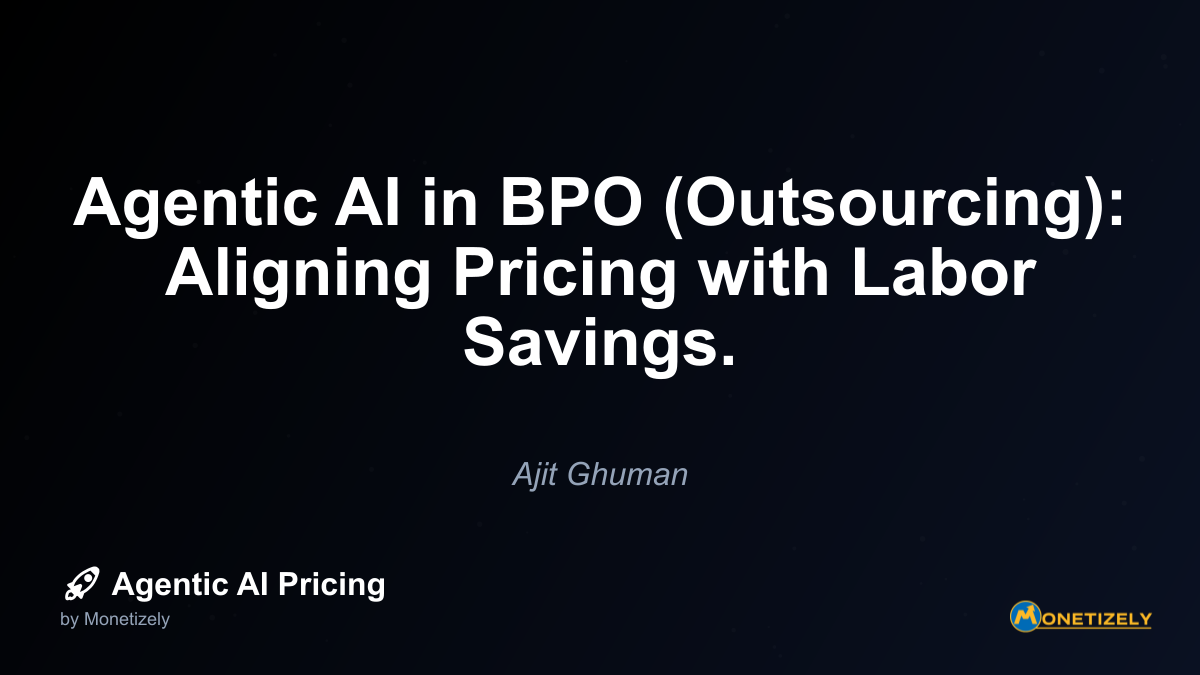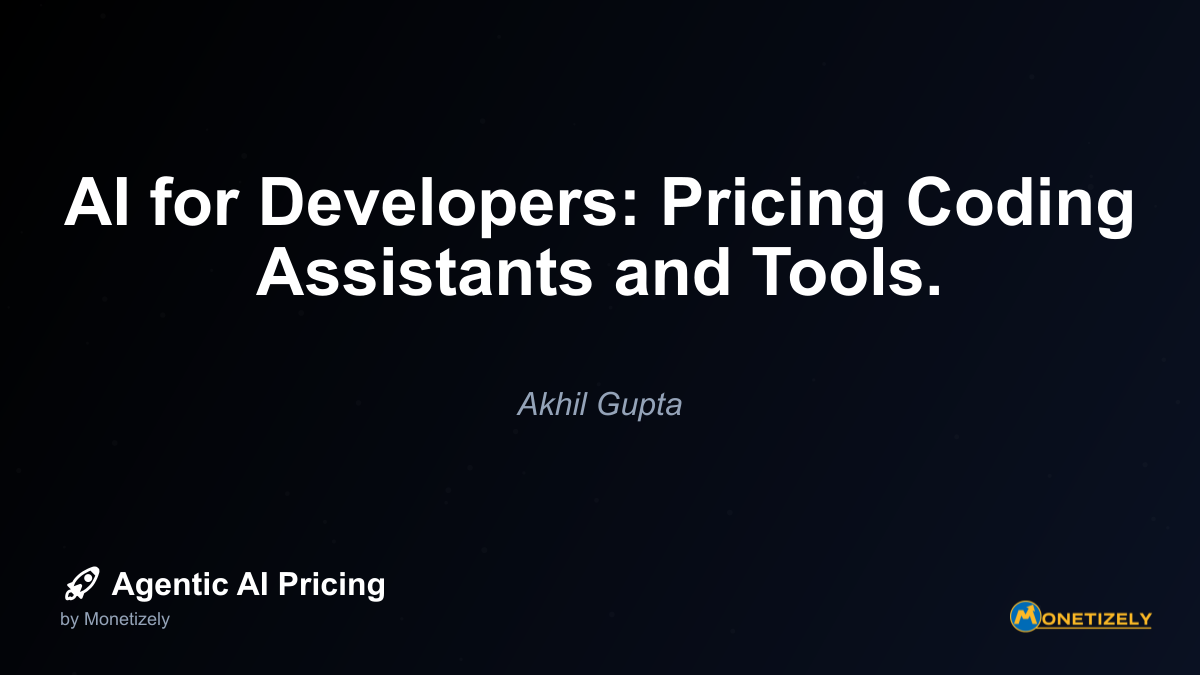· Akhil Gupta · Industry Insights · 8 min read
Private Equity Playbook: Optimizing AI Product Pricing for Growth.
AI and SaaS Pricing Masterclass
Learn the art of strategic pricing directly from industry experts. Our comprehensive course provides frameworks and methodologies for optimizing your pricing strategy in the evolving AI landscape. Earn a professional certification that can be imported directly to your LinkedIn profile.

In today’s competitive landscape, private equity firms are increasingly focusing on AI-powered SaaS companies as prime investment targets. These investors recognize a critical lever for value creation: strategic pricing optimization. While traditional SaaS pricing strategies provide a foundation, AI products present unique challenges and opportunities that require specialized approaches to maximize growth, retention, and ultimately, investor returns.
Why Private Equity Firms Target Pricing as a Value Creation Lever
Private equity firms approach newly acquired AI companies with a disciplined value creation playbook. Among the various operational improvements they implement, pricing strategy often emerges as one of the highest-impact, lowest-effort levers available. Unlike product development or market expansion initiatives that may take months or years to yield results, pricing adjustments can deliver immediate revenue impact with relatively minimal implementation costs.
According to recent industry data, a mere 1% improvement in pricing can translate to an 11-12% increase in profitability for SaaS businesses. For AI-powered products, where value delivery often significantly exceeds current pricing models, this impact can be even more pronounced.
“Most founders undervalue their products, particularly in AI,” explains Sarah Chen, Operating Partner at TechCapital Partners. “They’re so focused on adoption and product development that pricing becomes an afterthought, creating immediate optimization opportunities when we acquire these companies.”
How PE Firms Evaluate AI Product Pricing During Due Diligence
Before implementing changes, private equity investors conduct thorough pricing diagnostics during the due diligence phase. This evaluation typically includes:
Value-to-price ratio analysis: Determining if customers are receiving substantially more value than they’re paying for, indicating pricing headroom
Competitive benchmarking: Comparing pricing structures against both direct competitors and adjacent solution providers
Customer segmentation review: Identifying if the current pricing strategy appropriately addresses different customer segments based on willingness to pay
Usage pattern analysis: Examining how different customer segments utilize the AI product’s features and capabilities
Pricing model assessment: Evaluating whether the current approach (seat-based, usage-based, outcome-based, etc.) optimally captures value
For AI products specifically, PE firms scrutinize computational costs and scalability. Unlike traditional SaaS products with predictable hosting costs, AI solutions may have variable infrastructure demands that increase with usage, creating unique unit economics considerations.
The Unique Pricing Challenges of AI Products
AI-powered solutions present distinct pricing challenges that private equity firms must address:
Cost Structure Complexity
Unlike traditional software with relatively fixed hosting costs, AI products often incur variable expenses based on:
- Computational resources required for model training and inference
- Data storage and processing requirements
- API calls to third-party services
- Human-in-the-loop costs for validation or exception handling
This variable cost structure makes simple subscription models potentially problematic, as high-usage customers may become unprofitable without usage limits or tiered pricing.
Value Perception Challenges
AI products often deliver value in ways customers struggle to quantify:
- Time savings from automation
- Improved decision quality
- Risk reduction
- Competitive advantage
Without clear value metrics, customers may resist premium pricing, even when the solution delivers substantial ROI.
Rapidly Evolving Capabilities
As AI models improve, the value delivered to customers often increases dramatically, yet pricing models may not automatically capture this enhanced value. This creates opportunities for strategic repricing during capability upgrades.
Common Pricing Adjustments PE Firms Implement for AI Products
When private equity firms optimize AI product pricing, they typically implement several strategic adjustments:
1. Introducing Usage-Based Components
Many PE firms shift AI products from pure subscription models to hybrid approaches that include usage-based elements. This might include:
- Base subscription plus usage tiers
- Credits or tokens that represent computational resources
- Outcome-based pricing tied to specific value metrics
This approach aligns pricing with both value delivery and cost structure, ensuring profitability across customer segments with varying usage patterns.
2. Value-Based Tier Restructuring
PE investors often find that AI product tiers are structured around features rather than customer value segments. Reorganizing tiers to align with customer value perception typically includes:
- Consolidating low-value features in base tiers
- Reserving high-value capabilities for premium tiers
- Creating enterprise tiers with customization options
This restructuring often allows for significant price increases in premium tiers while maintaining competitive entry-level pricing.
3. Implementing Strategic Price Increases
When analysis reveals significant underpricing, PE firms may implement direct price increases through several approaches:
- Grandfathering existing customers at current rates while increasing prices for new customers
- Phased increases with advance notice to minimize churn
- Pairing price increases with added value or capabilities
For AI products, these increases often target specific segments that receive disproportionate value or consume substantial computational resources.
4. Optimizing Discounting Governance
Many PE firms discover inconsistent discounting practices that erode margins. Establishing formal discounting guidelines typically includes:
- Maximum discount thresholds by tier and contract value
- Approval workflows for exceptions
- Incentive structures that reward sales teams for maintaining price integrity
For AI products with high gross margins but significant R&D costs, maintaining price discipline is particularly crucial for long-term profitability.
5. Developing Expansion Revenue Strategies
PE investors recognize that initial sale price is only part of the equation. They implement systematic approaches to expand revenue within existing accounts:
- Usage growth incentives that encourage increased adoption
- Cross-sell opportunities for complementary AI capabilities
- Structured upsell paths to higher tiers based on value triggers
- Outcome-based success metrics that demonstrate ROI and justify expansion
Case Study: TechCapital’s Optimization of AIAnalytics Platform
When TechCapital Partners acquired AIAnalytics, a predictive analytics platform for e-commerce businesses, the company was growing at 40% annually but struggling with declining margins. The PE firm identified several pricing opportunities:
Problem: All customers paid the same flat monthly fee regardless of store size or transaction volume, creating profitability challenges with larger customers.
Solution: TechCapital implemented tiered pricing based on monthly transaction volume, with additional charges for premium AI features like personalized recommendation engines and inventory optimization.
Result: Within 12 months, average revenue per account increased by 62% while churn decreased by 5%, as customers perceived greater value alignment. EBITDA margins expanded from 15% to 28%.
The key insight was that larger e-commerce customers were receiving exponentially more value from the AI-driven predictions but paying the same as small businesses. By aligning pricing with value delivery and resource consumption, TechCapital dramatically improved unit economics.
Balancing Growth and Profitability in AI Pricing Strategy
Private equity firms recognize that pricing optimization isn’t simply about maximizing short-term revenue. Strategic pricing must balance multiple objectives:
Customer Acquisition Considerations
Entry-level pricing must remain competitive enough to maintain healthy customer acquisition, particularly in categories where AI capabilities are becoming commoditized. PE firms often maintain aggressive pricing at lower tiers while optimizing premium tier pricing.
Retention Impact Analysis
Before implementing significant pricing changes, sophisticated PE investors model potential churn impact across different customer segments. This analysis often reveals that:
- High-value customers utilizing core AI capabilities are typically less price-sensitive
- Customers receiving marginal value may be at churn risk with price increases
- Appropriate communication and grandfathering strategies can minimize negative impact
Competitive Positioning Strategy
PE firms assess how pricing changes will affect competitive positioning, particularly against both:
- Traditional non-AI alternatives that may be lower-priced but less capable
- Enterprise AI solutions that offer greater customization at premium prices
The goal is positioning that establishes clear value differentiation while maintaining competitive advantage.
Implementing Effective AI Value Metrics
One of the most powerful strategies PE firms employ is developing and communicating clear value metrics that justify premium pricing for AI capabilities:
Time-to-Value Acceleration
AI solutions often deliver value faster than traditional alternatives. Quantifying this acceleration—for example, reducing analysis time from days to minutes—creates compelling ROI narratives.
Accuracy Improvements
For AI products that enhance decision quality, measuring accuracy improvements against baseline methods establishes concrete value. For example, demonstrating a 35% reduction in false positives for a security AI justifies premium pricing.
Resource Optimization
AI solutions that optimize resource allocation (human capital, inventory, energy, etc.) can measure this efficiency gain in financial terms, creating direct ROI calculations.
Revenue Impact Measurement
The most compelling value metrics directly connect AI capabilities to revenue generation, whether through increased conversion rates, higher average order values, or expanded customer lifetime value.
By implementing robust value measurement frameworks, PE firms help portfolio companies justify premium pricing while strengthening customer retention.
Technology and Infrastructure for Pricing Execution
Successfully implementing optimized pricing strategies requires appropriate systems and processes. PE firms typically invest in:
Billing System Upgrades
Many AI companies lack billing infrastructure that supports complex pricing models. PE investors often prioritize implementing systems capable of:
- Usage-based billing
- Tiered pricing with automatic upgrades
- Flexible discounting with approval workflows
- Accurate metering of computational resources
Analytics Capabilities
Effective pricing optimization requires continuous monitoring and refinement. PE firms implement analytics that track:
- Pricing efficiency by segment
- Discount analysis and compliance
- Usage patterns that indicate upsell opportunities
- Churn risk based on value utilization
Sales Enablement Tools
To support sales teams in communicating and defending value-based pricing, PE investors develop:
- ROI calculators that quantify customer-specific value
- Competitive battlecards addressing price objections
- Value narrative frameworks that justify premium pricing
- Training programs on value-based selling
Future Trends in PE-Driven AI Pricing Optimization
As the AI market matures, several emerging trends are shaping PE approaches to pricing optimization:
Outcome-Based Pricing Models
More sophisticated PE investors are exploring pricing models that directly tie costs to measurable outcomes, sharing both risk and reward with customers. While complex to implement, these models can create significant competitive differentiation.
Dynamic Pricing Capabilities
AI products are increasingly implementing their own dynamic pricing capabilities, adjusting rates based on:
- Current computational load and capacity
- Customer-specific value patterns
- Competitive positioning
- Market demand signals
Ecosystem Pricing Strategies
As AI platforms expand into ecosystems with multiple capabilities, PE firms are developing sophisticated pricing strategies that optimize across the entire product portfolio rather than viewing products in isolation.
Conclusion: The PE Advantage in AI Pricing Optimization
Private equity firms bring disciplined, data-driven approaches to AI pricing optimization that many founder-led companies lack. By implementing strategic pricing adjustments that align with both value delivery and cost structures, these investors can dramatically accelerate growth while expanding margins.
For AI company founders considering PE partnerships, understanding this pricing optimization playbook provides valuable perspective on potential value creation. For executives at PE-backed companies, recognizing these strategies helps align organizational priorities with investor expectations.
As AI capabilities continue evolving rapidly, pricing strategy remains one of the most powerful and immediate levers for value creation—one that sophisticated PE investors will continue to prioritize in their playbooks.
Co-Founder & COO
Akhil is an Engineering leader with over 16+ years of experience in building, managing and scaling web-scale, high throughput enterprise applications and teams. He has worked with and led technology teams at FabAlley, BuildSupply and Healthians. He is a graduate from Delhi College of Engineering and UC Berkeley certified CTO.
Pricing Strategy Audit
Let our experts analyze your current pricing strategy and identify opportunities for improvement. Our data-driven assessment will help you unlock untapped revenue potential and optimize your AI pricing approach.




